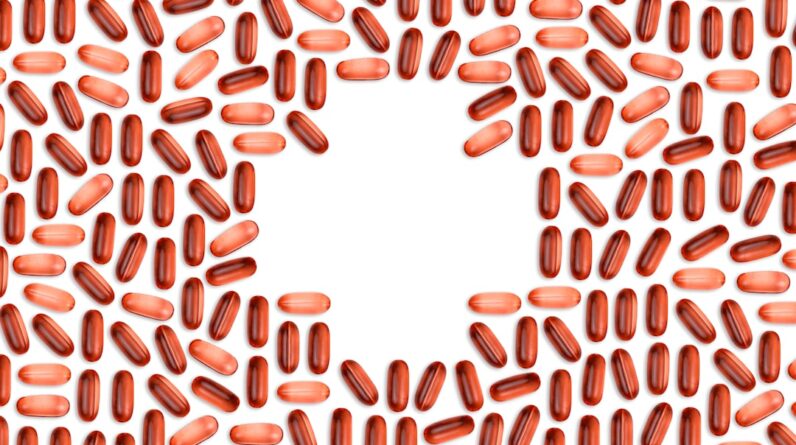The heart is often referred to as the engine of the body, tirelessly pumping blood and ensuring that every cell receives the oxygen and nutrients it needs to function optimally. This remarkable organ, roughly the size of a fist, is central to your overall health and well-being. Understanding the heart’s structure and function is essential, as it plays a pivotal role in sustaining life.
As you delve into the intricacies of this vital organ, you will discover not only how it operates but also how you can take steps to maintain its health. Your heart is more than just a muscular pump; it is a complex organ that works in harmony with other systems in your body. It beats rhythmically, responding to your body’s demands, whether you are at rest or engaged in vigorous activity.
The heart’s ability to adapt to various situations is a testament to its resilience and importance. By exploring the anatomy, function, and health of the heart, you can gain valuable insights into how to support this essential organ throughout your life.
Key Takeaways
- The heart is a vital organ that pumps blood throughout the body, delivering oxygen and nutrients to the cells and removing waste products.
- The heart is made up of four chambers: two atria and two ventricles, and is surrounded by a protective sac called the pericardium.
- The cardiac cycle consists of the systole (contraction) and diastole (relaxation) phases, which work together to pump blood efficiently.
- The heart plays a crucial role in circulation, ensuring that blood is distributed to all parts of the body, including the lungs for oxygenation.
- The heart’s function is regulated by the autonomic nervous system and hormones, which help maintain a steady heart rate and blood pressure.
Anatomy of the Heart
The Heart’s Chambers
The heart consists of four chambers: the right atrium, right ventricle, left atrium, and left ventricle. Each chamber plays a specific role in the circulation of blood. The right atrium receives deoxygenated blood from the body through the superior and inferior vena cavae, while the right ventricle pumps this blood to the lungs for oxygenation. In contrast, the left atrium receives oxygen-rich blood from the lungs via the pulmonary veins, and the left ventricle is responsible for distributing this oxygenated blood throughout the body.
The Heart’s Valves
In addition to its chambers, the heart is equipped with valves that ensure unidirectional blood flow. The tricuspid valve separates the right atrium from the right ventricle, while the pulmonary valve controls blood flow from the right ventricle to the lungs. On the left side, the mitral valve separates the left atrium from the left ventricle, and the aortic valve regulates blood flow from the left ventricle into the aorta.
Efficient Circulation
These valves are crucial for maintaining efficient circulation and preventing backflow, allowing your heart to function effectively. By understanding the anatomy of the heart, including its chambers and valves, we can appreciate the complexity and importance of this vital organ.
The Cardiac Cycle

The cardiac cycle refers to the sequence of events that occur during one heartbeat, encompassing both contraction and relaxation phases. This cycle can be divided into two main phases: systole and diastole. During systole, the heart muscles contract, pumping blood out of the chambers.
The ventricles contract first, pushing blood into the pulmonary artery and aorta, while the atria contract slightly earlier to fill the ventricles with blood. This coordinated effort ensures that blood is efficiently circulated throughout your body. Following systole is diastole, during which the heart muscles relax and refill with blood.
The chambers expand as they receive blood from their respective sources—the atria fill with blood returning from the body and lungs while the ventricles fill with blood from the atria. This rhythmic cycle of contraction and relaxation occurs approximately 60 to 100 times per minute in a healthy adult at rest, demonstrating the heart’s remarkable endurance and efficiency in maintaining circulation.
Role of the Heart in Circulation
The heart’s primary role is to facilitate circulation, ensuring that oxygenated blood reaches every part of your body while simultaneously returning deoxygenated blood to be reoxygenated in the lungs. This process is vital for sustaining life, as every cell relies on a constant supply of oxygen and nutrients delivered through the bloodstream. The heart works in conjunction with a vast network of blood vessels—arteries, veins, and capillaries—to achieve this intricate task.
As you engage in physical activity or experience emotional stress, your heart responds by increasing its output to meet your body’s heightened demands. This adaptability is crucial for maintaining homeostasis, allowing your body to function optimally under varying conditions. The heart’s ability to adjust its rate and strength of contraction ensures that your organs receive adequate blood flow regardless of external circumstances.
Regulation of Heart Function
The regulation of heart function is a complex interplay between various systems within your body. The autonomic nervous system plays a significant role in controlling heart rate and contractility. The sympathetic nervous system increases heart rate during times of stress or physical exertion, while the parasympathetic nervous system slows it down during periods of rest and relaxation.
This balance allows your heart to respond appropriately to different situations. Hormonal influences also contribute to heart regulation. For instance, adrenaline released during stressful situations can increase heart rate and force of contraction, preparing your body for a “fight or flight” response.
Additionally, other hormones such as norepinephrine and thyroid hormones can affect heart function by altering its rate and strength. Understanding these regulatory mechanisms can help you appreciate how your body maintains cardiovascular health under various conditions.
Common Heart Conditions

Despite its resilience, the heart is susceptible to various conditions that can compromise its function. Some common heart diseases include coronary artery disease (CAD), heart failure, arrhythmias, and valvular heart disease. CAD occurs when plaque builds up in the coronary arteries, restricting blood flow to the heart muscle and potentially leading to chest pain or heart attacks.
Heart failure refers to a condition where the heart cannot pump enough blood to meet your body’s needs, resulting in fatigue and fluid retention. Arrhythmias are irregular heartbeats that can range from harmless to life-threatening. They may cause palpitations or dizziness and can be triggered by various factors such as stress or underlying health issues.
Valvular heart disease involves damage or dysfunction of one or more heart valves, which can disrupt normal blood flow and lead to complications if left untreated. Being aware of these conditions can empower you to seek timely medical attention if you experience symptoms or risk factors associated with heart disease.
Importance of Maintaining Heart Health
Maintaining heart health is paramount for overall well-being and longevity. A healthy heart not only supports efficient circulation but also reduces your risk of developing serious cardiovascular diseases later in life. Factors such as diet, exercise, stress management, and regular medical check-ups play crucial roles in preserving your heart’s health.
By prioritizing these aspects of your lifestyle, you can significantly enhance your quality of life. Moreover, understanding your family history and personal risk factors can help you take proactive measures to protect your heart. Regular screenings for cholesterol levels, blood pressure, and other cardiovascular markers can provide valuable insights into your heart health status.
By being informed and taking action early on, you can mitigate potential risks and ensure that your heart remains strong throughout your life.
Tips for Keeping Your Heart Healthy
To keep your heart in optimal condition, consider adopting several lifestyle changes that promote cardiovascular health. First and foremost, focus on maintaining a balanced diet rich in fruits, vegetables, whole grains, lean proteins, and healthy fats. Foods high in omega-3 fatty acids—such as fish—can help reduce inflammation and lower cholesterol levels.
Limiting processed foods high in sugar and saturated fats is equally important for preventing weight gain and reducing strain on your heart. Regular physical activity is another cornerstone of heart health. Aim for at least 150 minutes of moderate-intensity aerobic exercise each week—activities like brisk walking, cycling, or swimming can significantly benefit your cardiovascular system.
Additionally, incorporating strength training exercises at least twice a week can enhance overall fitness and support healthy weight management. Managing stress effectively is also crucial for maintaining a healthy heart. Techniques such as mindfulness meditation, yoga, or deep-breathing exercises can help reduce stress levels and promote relaxation.
Furthermore, ensuring you get adequate sleep each night is essential for overall health; aim for 7-9 hours of quality sleep to support your body’s recovery processes. Lastly, don’t underestimate the importance of regular check-ups with your healthcare provider. Monitoring key indicators such as blood pressure, cholesterol levels, and overall cardiovascular health can help you stay informed about your heart’s condition and make necessary adjustments to your lifestyle as needed.
By taking these proactive steps toward maintaining your heart health, you empower yourself to lead a longer, healthier life filled with vitality and energy. Your heart deserves care and attention—after all, it works tirelessly for you every single day.
Heart function is crucial for overall health and well-being. Understanding how nutrition plays a role in supporting heart function is essential. One related article that delves into the importance of nutrition is How Does Nutrition Work in the Body. This article explores how the nutrients we consume impact various bodily functions, including the heart. By making informed choices about our diet and incorporating heart-healthy foods, we can support optimal heart function and overall health.
FAQs
What is the function of the heart?
The main function of the heart is to pump blood throughout the body, delivering oxygen and nutrients to the cells and removing waste products.
How does the heart pump blood?
The heart pumps blood through a series of contractions and relaxations of its four chambers. The atria receive blood from the body and the lungs, while the ventricles pump blood out to the body and the lungs.
What is the role of the heart valves?
The heart valves ensure that blood flows in one direction through the heart. The four valves – the tricuspid, pulmonary, mitral, and aortic valves – open and close to regulate the flow of blood.
What is the electrical system of the heart?
The heart has its own electrical system that controls the rate and rhythm of the heartbeat. The sinoatrial (SA) node generates electrical impulses, which travel through the atria and then to the atrioventricular (AV) node, causing the heart to contract and pump blood.
How does the heart maintain its own blood supply?
The heart has its own network of blood vessels, called coronary arteries, that supply it with oxygen and nutrients. These arteries branch off from the aorta and ensure that the heart muscle receives the blood it needs to function properly.






